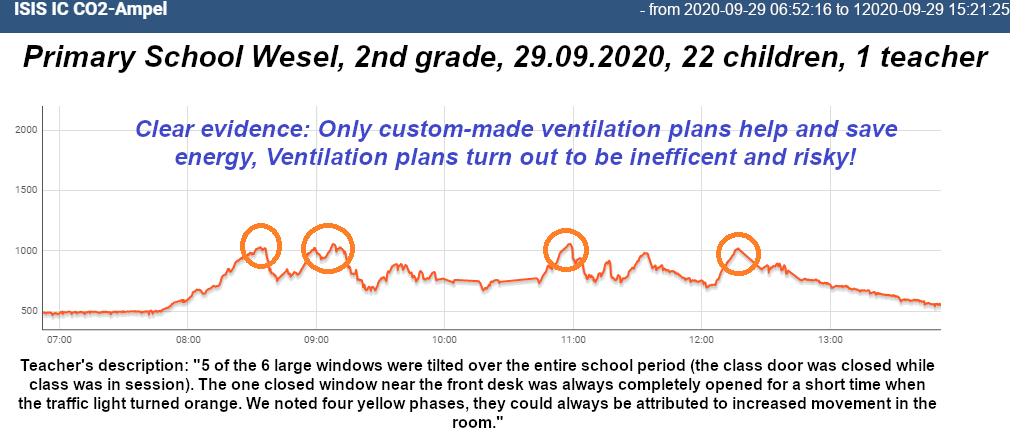CO2 Ampel: Studies
After the emergence of the novel SARS-CoV-2 virus, the first scientific findings on the pathways of its spread quickly emerged. An important contribution was made in July 2020 by a study of the Hermann Rietschel Institute Berlinon the Risikobewertung von virenbeladenen Aerosolen anhand der CO2-Konzentration(eng. the risk assessment of virus-laden aerosols based on CO2 concentration). It proved that the CO2 concentration in closed rooms is an indicator for the aerosol load and thus for the risk of infection with COVID-19. It follows that a CO2 Ampel in closed rooms is a great help in reducing the risk of infection.
Subsequent scientific findings also support the importance that efficient ventilation plays in managing the corona crisis. We have compiled some of them for you here.
Risk assessment of virus-laden aerosols based on CO2 concentration
The study„Risikobewertung von virenbeladenen Aerosolen anhand der CO2-Konzentration“(eng. "Risk assessment of virus-laden aerosols based on CO2 concentration") of the Hermann Rietschel Institute from 2020 deals with the relationship between CO2 and aerosol concentration in rooms. . It also looks at the risk assessment of the SARS-CoV-2 infection risk as a function of CO2and aerosol sources, as well as lowering factors. . An important component of the analytical approach is the control of CO2 volume flows using a "Lüftungs Ampel" (eng. ventilation meter), which translates threshold value exceedances into signal colours and encourages room ventilation.
CO2 dispersion in the classroom
The video illustrates the dispersion of CO2, and thus also aerosols, in a classroom with closed windows and doors.

Efficient ventilation with CO2 Ampel
In September last year, ISIS IC conducted a study in Wesel's schools. In this study, Conny, the CO2 Ampel that breathes, was placed in the classrooms and the teachers were instructed to ventilate at the intervals indicated by the CO2 Ampel. The CO2 values over a period from 7 a.m. to 2 p.m. are summarised in the graph.
Comparing the graph with the teacher's experience, it becomes clear that the four noted yellow phases (circled here in orange) correspond to increased movement in the room.
Two conclusions can be drawn from the data regarding strict ventilation plans, such as the 20-5-20 rule:
- Fixed ventilation plans are risky because they do not take into account the number of people or their movement in the room (see the first and second yellow phase).
- Only targeted ventilation saves energy and is better for the environment (see long green phase between yellow phase 2 and 3).

Further Studies
Inflexible ventilation rules have a big problem: they do not adapt to variable factors such as the number of people in the room, their activity, or the size of the room. The importance of these factors is shown by a study from Cambridge, which is used as the basis for a tool to calculate the risk of infection in rooms: Airborne.cam - evaluate COVID-19 risk of infection from airborne transmission
Not only coughing, sneezing, or singing - speaking can also act as a carrier of Sars-CoV-2. The virus-laden aerosols are also released when people speak and can remain in the room for up to an hour. The good news is that ventilation also helps here: Sars-CoV-2-Verbreitung in Räumen: Sprechen könnte riskanter sein als Husten - n-tv.de (n-tv.de)
Talking can spread Covid as much as coughing, says research | Coronavirus | The Guardian
Important information on the role of aerosols in the spread of Sars-CoV-2 can be found here:
